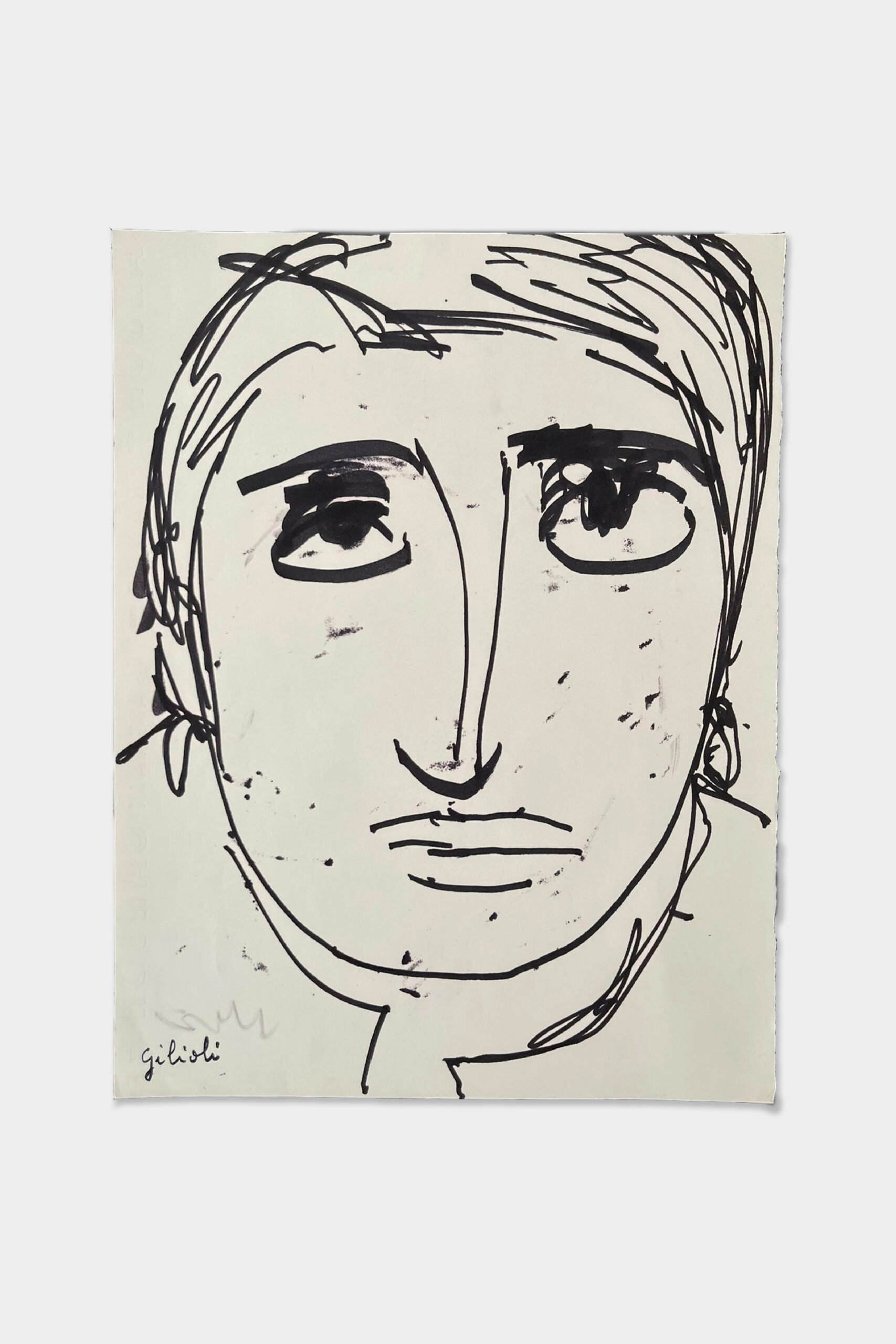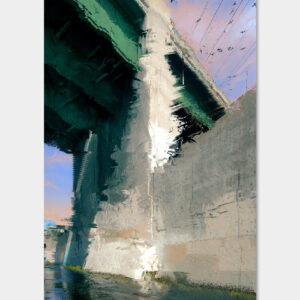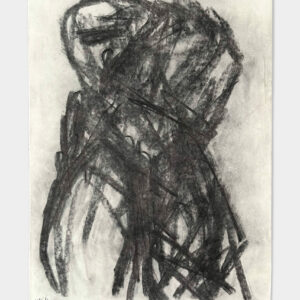Description
Émile Gilioli, Portrait (signed, untitled, circa 1960)
Untitled (Woman portrait, probably of his wife Babette)
Signed original
Mention in pencil at the back: 1446
Marker on Canson paper
9.5″x 11. 7/8″ (24cm x 32cm)
Unframed
Émile Gilioli (1911-1977) was a French sculptor, one of the most representatives of abstract French sculpture in the 1950s.
Son of a shoemaker, Emile Gilioli was born in 1911 in Paris. Like Henri Laurens, he was born on the banks of the St Martin canal. When he was three years old, his family moves to Mantua (Italy). There, the child is working at the forge. After WW1, his parents move back to France to live in Nice, where while continuing to work at the forge, he follows classes at the École des Arts Décoratifs (School of Decorative Arts). At 17, he works for a sculptor and at 19, he passes his entrance exam to the École des Beaux-Arts in Paris where he joins the studio of sculptor Jean Boucher.
During his mobilization in Grenoble in 1939, he meets the curator of the Museum of Grenoble who introduces him to cubist artists and in particular painter Pierre Closon, one of the rare French artists to have taken part in the beginnings of the Abstraction adventure. Gilioli returns to Paris in 1945; he becomes friends with Poliakoff and Deyrolle and takes his place in the young abstract school of Paris (École de Paris to which painter Michel Carrade also belonged). He actively participates in all exhibitions of young sculpture, in France and abroad.
In 1941 he held his first solo exhibition at Galerie Laforge in Grenoble, and a second the following year at Galerie Reppilin-Perriot. Then in 1946 after the Liberation he held his first exhibition in Paris at Galerie Breteau which lead to him being taken on by the high profile Galerie Denise René. Here he associated with leading avant-garde artists Poliakoff, Vasarely, Deyrolle and Dewasne, and also exhibited with Arp, Giacometti, Laurens and Picasso, and became friends with Brancusi. In 1949 he participated in a major exhibition at Galerie Colette Allendy with Deyrolle, Hartung, Soulages and Schneider which firmly established Gilioli at the forefront of the avant-garde. In 1951 he became vice-president of the prominent abstract group Espace, initiated by André Bloch, Fernand Leger and Le Corbusier. His friend Claude Parent was also a member of the Groupe Espace. In 1957 Gilioli was taken on by the distinguished Parisian Galerie Louis Carré. During the next two decades Gilioli exhibited extensively and he divided his time working between Paris and St.-Martin-de-la-Cluze in Dauphine where Paquier is located.
Most notable exhibitions include: 1950 Vienna; 1952 Brussels; 1953 Anvers; 1954 Milan; 1956 Musée Rodin, Paris; Stedelijk Museum, Amsterdam; 1958 Stockholm; Musée d’Art Moderne, Paris; 1959 Kassel; 1960 Lund; Marseille; 1964 Milan; 1967 Montreal; 1968 Lausanne; 1969 retrospective at Maison de la Culture, Grenoble. He also participated in the Salon de Mai, Salon des Réalités Nouvelles, Salon d’Art Sacre and Salons de la Jeune Sculpture. He won an award at the Sao Paulo Biennale (1957) and the Carrara sculpture prize (1959). Gilioli has also executed several important public works including the National Monument of the Resistance at Les Glières, Haute Savoie. In 1963 he created a vast habitable sculpture for the Paris Fair titled “Pavillon d’Or”. Since his death, he has been celebrated in several museum retrospectives including at the Musée National d’Art Moderne, Centre Georges Pompidou in Paris in 1979.
- Atelier Gilioli – espace muséographique et bibliothèque, 38650 Saint Martin de la Cluze;
- Musée de Peinture et de Sculpture, Grenoble;
- Centre Georges-Pompidou, Paris;
- Musée National d’Art Moderne, Paris;
- Musée de Sculpture de la Ville, Paris;
- Musée de la Sculpture en plein air, Paris;
- Musée des Beaux-Arts, Dunkerque;
- Musée Fabre, Montpellier;
- Musée des Beaux-Arts de Rouen.
- Tate Gallery in London;
- Museum of Open Air Sculpture, Antwerp;
- São Paulo Museum of Modern Art;
- Museum of Modern Art, New York</a>;
- Bezalel Museum, Jerusalem;
- Museum of Fine Arts, Ostend;
- National Museum of History and Art, Luxembourg;
- Museo de Bellas Artes, Caracas;
- Museo dei Bozzetti, Pietrasanta;
- Kunsthaus, Zurich.






